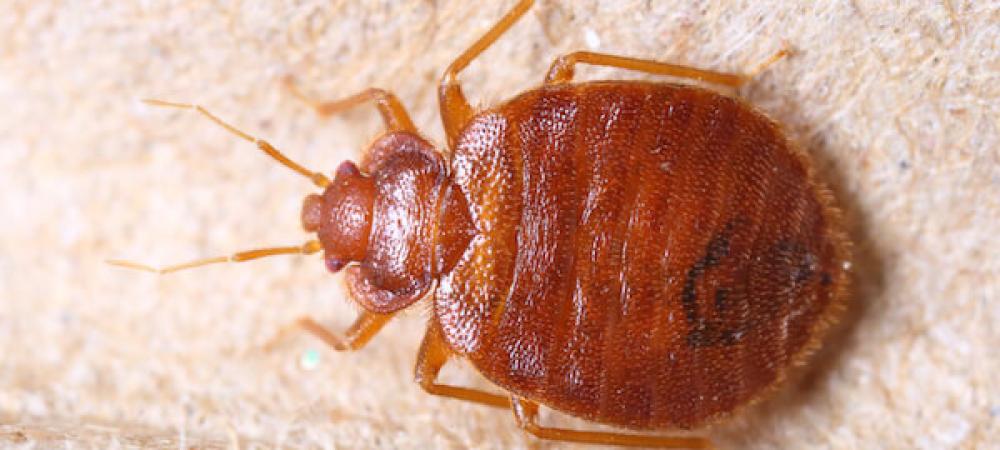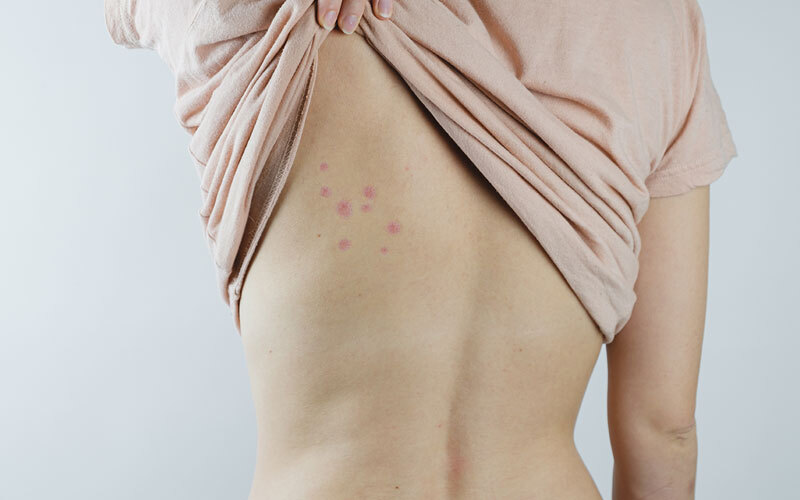What Do Bed Bugs Look Like And Do I Have Them?

Bed bugs are small, parasitic insects that have plagued humankind for centuries. These nocturnal pests feed on human blood and are notorious for infesting homes, hotels, and other dwellings. Despite their name, bed bugs are not limited to beds and can be found in furniture, upholstery, and even clothing. In this comprehensive guide, we will delve into the world of bed bugs, exploring their behavior, signs of infestation, prevention techniques, and effective eradication methods.
What Do Bed Bugs Look Like?
Bed bugs are small, wingless insects with a distinctive appearance. Here's a brief description of what they look like:
- Size and Shape: Adult bed bugs are about the size of an apple seed, typically ranging from 4 to 5 millimeters in length. They have a flat, oval-shaped body.
- Color: Bed bugs are usually reddish-brown in color, but they can appear darker or lighter depending on when they last fed. After feeding, their bodies become more elongated and redder.
- Body Features: Bed bugs have six legs and two antennae. Their bodies are segmented, and they have a small head with a prominent, segmented proboscis (mouthpart) for piercing the skin and feeding on blood.
- Bed Bug Life Stages: Bed bugs go through several life stages, including eggs, nymphs, and adults. Nymphs are smaller and lighter in color than adults and become darker as they mature. Bed bug eggs are tiny, white, and difficult to see without magnification.
Still not sure if your bug is a bed bug? Send a clear picture to Info@SenateTermiteControl.com, and our Associate Certified Entomologist will provide a free verification!
What Do Bed Bug Bites Look Like?
Typically, bed bug bites appear as small, red, itchy bumps on the skin, though bed bug bites can vary in appearance and the reaction they cause in individuals. They often occur in clusters or lines, as bed bugs tend to bite multiple times in a row. The bites may resemble mosquito bites, flea bites, or small welts. However, it's important to note that the appearance and reaction to bed bug bites can vary from person to person.

Bed Bug Bite Symptoms
Some individuals may have no visible reaction, while others may experience more severe symptoms such as intense itching, swelling, or even allergic reactions. It's essential to keep in mind that bed bug bites alone are not a reliable indicator of infestation, as reactions can differ greatly among individuals. Other signs, such as finding actual bed bugs or their excrement, are crucial for proper identification.
Early Signs of Bed Bugs
Identifying a bed bug infestation early is crucial for effective eradication. Here are some common signs to watch out for:
-
Bites and Skin Reactions: Bed bug bites often appear in clusters or rows on exposed areas of the body. They can cause itching, redness, and swelling, similar to mosquito bites. However, reactions to bed bug bites vary from person to person.
-
Blood Stains and Fecal Matter: Bed bugs leave behind blood stains on sheets, pillowcases, or other bedding materials after feeding. Additionally, dark spots of excrement may be visible on mattresses, walls, or furniture.
-
Musty Odor: A strong, sweet, musty odor may be present in heavily infested areas. This odor is emitted by the bed bug's scent glands and can be an indication of a significant infestation.
-
Visual Confirmation: Inspect your mattress, box spring, and furniture for live bed bugs or their shed skins. Adult bed bugs are reddish-brown and about the size of an apple seed, while younger nymphs are smaller and lighter in color.
-
Bed Bug Eggs and Eggshells: Bed bug eggs are tiny, about 1mm in size, and whitish in color. Look for these eggs, along with any empty eggshells, in cracks, crevices, and other potential hiding spots.
Preventing Bed Bug Infestations
Prevention is the first line of defense against bed bugs. Although it's challenging to completely eliminate the risk, the following measures can help minimize the chances of an infestation:
-
Inspect Second-Hand Furniture: Carefully inspect used furniture, mattresses, and other items before bringing them into your home. Pay close attention to crevices, seams, and tufts where bed bugs might hide.
-
Be Cautious While Traveling: When staying in hotels or guest accommodations, inspect the mattress, headboard, and furniture for any signs of bed bugs. Use luggage racks or keep your suitcase elevated to minimize the risk of picking up hitchhiking bed bugs.
-
Encase Mattresses and Box Springs: Covering mattresses and box springs with bed bug-proof encasements can help prevent bed bugs from establishing harborage and make detection easier.
-
Regular Cleaning and Clutter Control: Reduce clutter in your home as bed bugs can hide in cracks, crevices, and piles of belongings. Vacuum frequently, paying attention to seams, edges, and other potential hiding spots.
How To Get Rid of Bed Bug Infestations
If you suspect or confirm a bed bug infestation, prompt action is essential. While professional extermination is often necessary for severe infestations, the following steps can aid in the eradication process:
-
Thorough Cleaning: Wash infested bedding, clothing, and fabrics in hot water, followed by a high-heat drying cycle. Use a stiff brush to scrub mattress seams and vacuum all affected areas meticulously.
-
Steam Treatment: Steam cleaning can effectively kill bed bugs and their eggs. Use a steamer with a high-temperature setting to treat mattresses, furniture, and other infested items.
-
Diatomaceous Earth: Diatomaceous earth is a fine powder made from the fossilized remains of diatoms, a type of algae. It works by physically dehydrating and damaging the exoskeleton of insects, including bed bugs. When bed bugs come into contact with diatomaceous earth, it clings to their bodies, leading to their eventual demise.
-
Seek Professional Help: If the infestation persists or is extensive, contacting a professional pest control company is highly recommended. They have the expertise and tools to eliminate bed bugs effectively and ensure long-term prevention.
Call Professional Bed Bug Exterminators
Bed bug infestations can be distressing and challenging to eliminate without proper knowledge and action. Early detection, prevention measures, and prompt treatment are key to controlling these resilient pests. By staying vigilant, practicing good hygiene, and seeking professional assistance when needed, you can regain control of your home and sleep soundly once again.
If you live in DC, Virginia, or Maryland, look no further than Senate Termite & Pest Control! Service our local communities since 1991, we have the experience, equipment, and expertise needed to get rid of bed bugs for good. Contact our team today!
FAQ About Bed Bugs
Here are some of the most common questions our bed bug removal specialist get from homeowners:
How Do You Get Bed Bugs?
Bed bugs are excellent hitchhikers! They travel with humans on their clothes, in their luggage, and even in their hair. Bed bugs can be found anywhere people are found. This means in public transportation, movie theaters, schools, hotels, airplanes, doctors' offices, and just about anywhere else you can imagine.
Most commonly, bed bugs are brought into a home after someone has traveled to a bed bug-infested place. The bed bugs conceal themselves in the traveler's luggage during their stay and are carried back home once the trip is over. However, they can also just as easily come home tucked behind the collar of a shirt after a night at your local movie theater.
When Are Bed Bugs Active?
Bed bugs are primarily active at night. They are nocturnal insects that prefer to feed on their human hosts while they are asleep. Bed bugs are attracted to the warmth and carbon dioxide emitted by humans, which is why they tend to come out during the night when people are in bed.
However, if they are hungry and a feeding opportunity arises, they can also be active during the daytime. Bed bugs are known to be opportunistic feeders and will adapt their activity patterns based on the availability of a host.
Can Bed Bug Transmit Disease?
No, bed bugs are not known to transmit diseases. Extensive research has shown no evidence of bed bugs transmitting pathogens or disease-causing organisms to humans. While their bites can cause discomfort, itching, and allergic reactions in some individuals, the primary concern with bed bug infestations is the nuisance they create rather than the transmission of diseases.
Where Do Bed Bugs Hide?
Bed bugs are excellent at hiding and can be found in various places within a living environment. Common hiding spots for bed bugs include:
- Mattresses and Box Springs: Bed bugs often hide in the seams, folds in bed sheets, and tufts of mattresses and box springs, close to where their human hosts sleep.
- Bed Frames and Headboards: The joints, cracks, and crevices of bed frames and headboards provide ideal hiding places for bed bugs.
- Furniture: Sofas, chairs, and upholstered furniture offer numerous hiding spots for bed bugs, especially in seams, cushions, and underneath the fabric.
- Wall and Floor Junctions: Bed bugs can hide in the gaps and cracks where walls meet the floor, as well as behind baseboards and electrical outlets.
- Luggage and Bags: Bed bugs can hitchhike on luggage, backpacks, and other personal items, hiding inside them until they reach a new location.
- Clothing and Bedding: Bed bugs may hide in folded clothing, blankets, and sheets, especially when infestations are severe.
- Cracks and Crevices: Bed bugs can squeeze into tiny cracks and crevices in walls, furniture, and flooring, making detection and elimination challenging.
It's important to note that bed bugs are highly adept at hiding and can even move to adjacent rooms or units through wall voids, electrical wiring, or plumbing pipes. A thorough inspection and targeted treatment of all potential hiding places are necessary to effectively eliminate a bed bug infestation.

